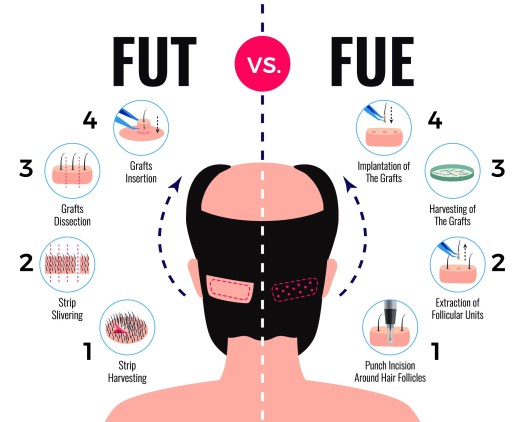How Effective Are The Different Methods of Hair Transplantation?
Hair transplants are intended to restore hair growth in areas of the scalp that have limited or no hair growth. They are an effective treatment for many types of hair loss, but they cannot prevent future hair loss. For long-term results, people may need follow-up transplants.
Hair loss and thinning hair is a normal part of the aging process, but can also be caused by disease or injury to the scalp. Some people suffering from hair loss choose to undergo hair transplants for cosmetic or reconstructive reasons.
In this article, we will look at the success rates of the different types of hair transplantation, as well as their duration and possible side effects.
Types of Hair Transplants
In hair transplantation, the surgeon removes follicles from an area with a high density of hair, such as the back of the head, which is called the donor area. The follicles are then implanted into small slits in the affected area of the scalp.

There are two main types of hair transplants:
Follicular unit strip surgery (FUSS). The surgeon removes a strip of skin from the donor site and closes the incision with sutures. Then, using a microscope, the donor skin is divided into tiny follicular units containing one or more hair follicles, and these units are inserted into the desired area.
Follicular Unit Extraction (FUE). The surgeon uses a small punch to extract follicles from the donor area. Although this procedure still results in a scar, it may be less noticeable and the person usually does not need stitches.
Also Read:- Hair Transplant in Ahmedabad
In most cases, surgeons use the side or back of the head as the donor area. However, removing skin from the chin, back or chest can also be effective. The use of body hair can be helpful for people who do not have thick hair on the back or sides of the head.
SomeTursted Source studies indicate that harvesting body or beard hair requires more time and skill than harvesting head hair. However, another study trusted Source reports that body and beard hair can be an "excellent source" of donor's hair for hair transplants.
Each procedure takes several hours, depending on the number of follicles the surgeon's implant, and both procedures require local anesthesia. Usually, the person can go home the same day of the procedure.
The Success Rrate of Hair transplantation
Hair transplantation is an effective procedure to restore hair growth after many causes of hair loss. The success rate of a hair transplant depends on many factors, such as the skill and experience of the surgeon and the thickness of the donor hair.
According to the American Society of Plastic Surgeons (ASPS), a hair transplant may involve a modest change in hair saturation. For drastic changes, skin flap surgery, tissue augmentation or scalp reduction may be an option.
There are no large studies that collect specific success rates for hair transplantation. However, several smaller studies and articles provide some information on the efficacy of these procedures.
source study found that most people who underwent FUE with body hair or whiskers combined with head hair were satisfied with the results after an average follow-up of 2.9 years. Among the 79 participants, the average overall satisfaction score was 8.3 out of 10.
Side Effects Hair Transplantation
according to the ASPS, hair transplants are generally safe when performed by a qualified and experienced surgeon. However, even with a successful hair transplant, some side effects may occur.
- Infection or bleeding
involves incisions or cuts in the skin. The surgeon makes an incision to remove the donor follicles and makes small incisions in the scalp where the follicles are inserted. With any incision, there is a risk of infection or excessive bleeding. - Scarring
There is also a risk of scarring in both the donor site and the transplanted site. The individual should discuss these risks with their surgeon before deciding to undergo the procedure.
The FUSS method usually leaves a long, linear scar where the surgeon removes a strip of scalp. This scar may be hidden as new hair grows around it. However, it may be visible if it widens during the healing process, if the surrounding hair is thin or if the person wears it short.
The FUE method may also leave some scars in the area where the surgeon extracted the follicles with a punch. However, these scars may not be as large as those of FUSS.
In some cases, the person may have developed bumps around the transplanted hair. When the hair grows back, it may cover these bumps. - Pain and swelling
Some people may experience pain as the skin heals after the procedure. The surgeon may give them pain medication to help. There may also be swelling of the head and face while the skin heals.
Summary
Hair transplant surgery can be a good option for people who have thinning hair and are losing it. Although it is not a permanent solution to thinning hair, it can help many people regain the fullness of hair and self-confidence.
transplant is good but going natural is best. do you know that one of the benefits of cannabis is for hair growth? Its very effective and confirmed by clients. You can have it here +1 (657) 256-5342
You must be logged in to post a comment.